Hey there, craft enthusiasts! We are taking a trip to the vibrant state, of Nagaland, Northeast. Nagaland is a true melting pot of cultures, with 16 distinct tribes, each with their own unique traditions, languages, and – you guessed it – art of Nagaland!
The Nagaland art and craft (or should we say, the Art of Nagaland!) is more than just decoration. It’s deeply woven into the fabric of Naga life. From the stunning textiles to the detailed wood carvings, every piece tells a story, reflects their rich heritage, and even holds spiritual significance showing beauty of art of Nagaland.
So, buckle up as we get into the world of Nagaland’s traditional handicrafts. We’ll be exploring everything from the age-old pottery in Nagaland, techniques to the breathtaking cane and bamboo work. Get ready to be amazed by the skill and creativity of the Naga tribes!
Traditional Art And Painting:
Let’s shift gears and focus on the beautiful world of Naga tribal art!
Here, we’ll be peeking into the fascinating world of traditional Naga paintings. Unlike some art of Nagaland, it’s forms has confined to museums, these paintings are often used to decorate houses, shields, and even ceremonial attire.
The stories don’t stop there. Each brushstroke in a Naga painting is blowing up with meaning. Keep an eye out for recurring motifs like hornbill figures (representing strength), human figures (depicting ancestors), and geometric patterns (symbolizing harmony). The colours themselves are a marvel – all-natural pigments derived from plants, minerals, and even insects! These vibrant hues, combined with the unique patterns are unique to each tribe, which develop a visual language that’s both beautiful and symbolic.
Next up, we’ll be exploring the incredible world of Naga bamboo and cane craft. Imagine transforming everyday plants into stunning art. That’s the magic of Naga bamboo and cane craft. These skilled artisans use their deep knowledge to bend and weave bamboo and cane into everything from baskets and furniture to utensils and even musical instruments. Each piece is not only beautiful but also incredibly functional, reflecting the Naga people’s deep connection to their environment.
1. Angami Basketry:
The refined basket-making skills of the Angami tribe, are renowned for their exceptional craftsmanship. Utilizing only locally sourced bamboo and cane, these artisans transform ordinary materials into intricate and beautiful baskets.
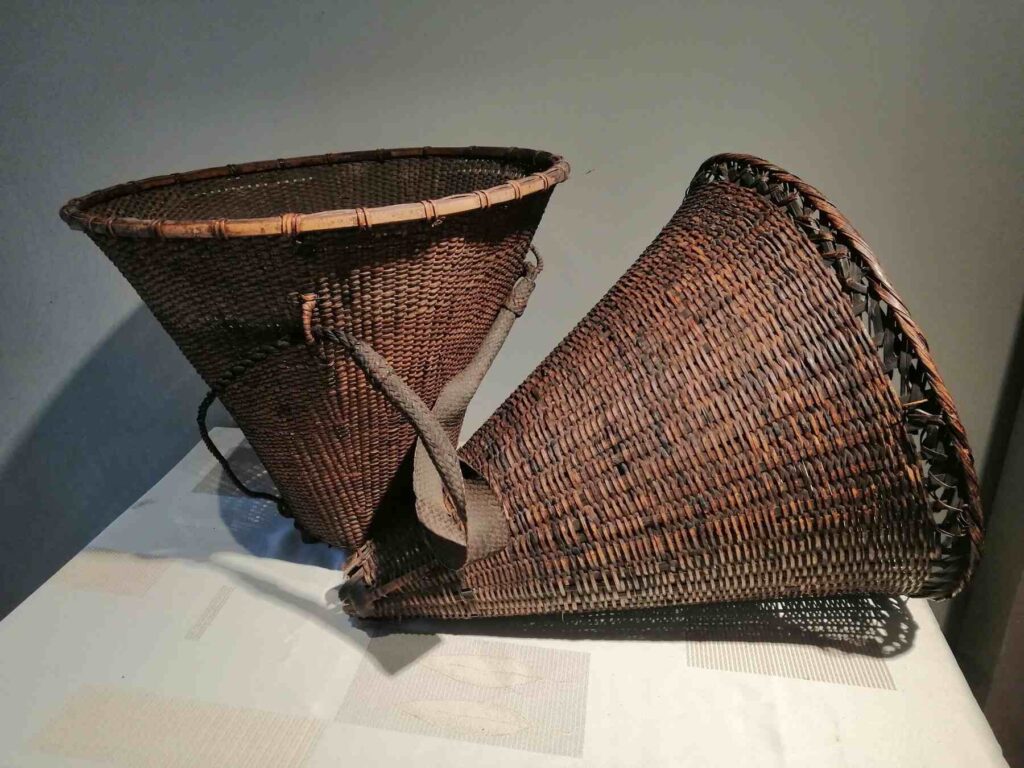
The process is a mesmerizing dance of skill and tradition. Bamboo is split into thin strips, meticulously treated, and then woven into stunning patterns. Cane, known for its sturdiness, often serves as the base or frame, providing structure to these masterpieces. But the Angami baskets aren’t just about beauty – they’re incredibly functional too. From carrying essential goods to winnowing grain, these baskets are a vital part of everyday Naga life. And let’s not forget the decorative touches! Look for intricately geometric patterns and even natural dyes that add a pop of colour, making each basket a unique work of art.
Naga wood carving, where stories come alive in the grain of the wood. The mighty Naga wood carving tradition is more than just shaping wood. Skilled artisans breathe life into figures, transforming blocks into powerful warriors, revered God, and mythical creatures. Each chip reveals a story, passed down through generations. From house posts decorated with traditional spirits to ceremonial masks portraying mythical beings, Naga wood carvings are a living testament to the rich cultural heritage and deep connection to the spirit world.
2. Konyak Tribe’s Expertise:
Going deeper into the captivating wood carving traditions of the Konyak tribe, here wood transforms into powerful narratives. Skilled Konyak artisans give life to a variety of figures, each holding cultural and aesthetic significance.
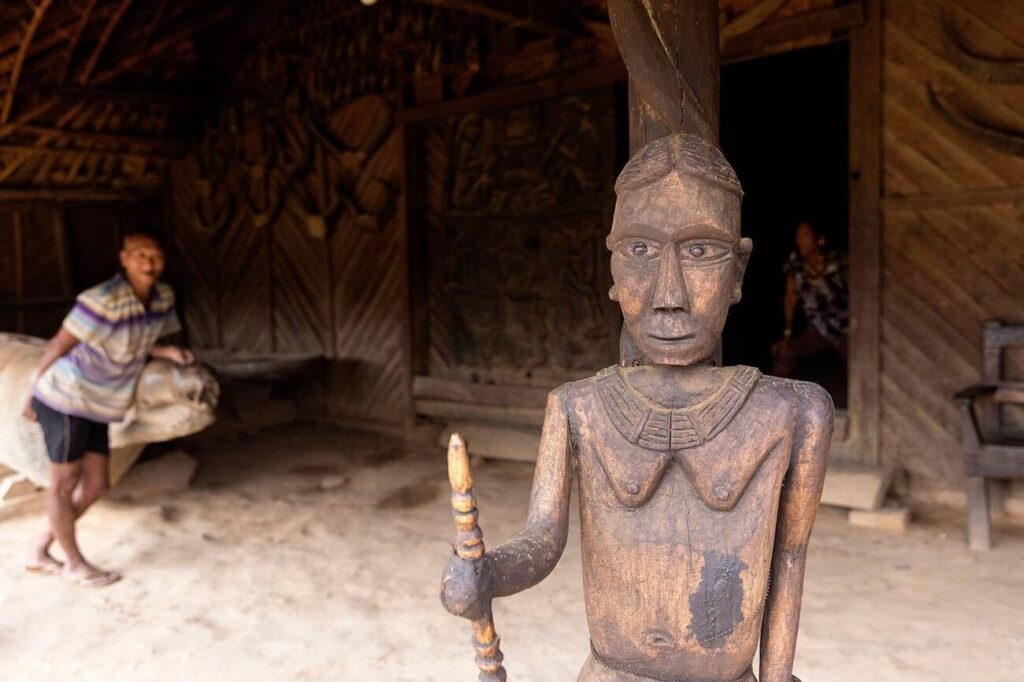
Keep an eye out for strong human figures, often warriors or fertility symbols. The mighty mithun head, a revered animal in Naga culture, frequently takes centre stage. Gliding hornbills, representing social status and strength, are another common motif. The wild beauty of the region also finds expression in carvings of elephants, leopards, and tigers, each symbolizing different virtues.
Beyond their visual appeal, these Konyak wood carvings serve as bridges to the spirit world, honouring ancestors, depicting deities, and even acting as talismans for protection. They are a testament to the Konyak tribe’s rich cultural heritage and their deep connection to the natural world.
3. Vibrant Nagaland Shawls:
Now, let’s lose ourselves in the vibrant world of Naga fabrics. Threads become stories, flaring with colour and cultural importance. Unlike your average piece of cloth, Naga shawls are like wearable canvases. Each tribe possesses distinct weaving techniques and patterns, passed down through generations.
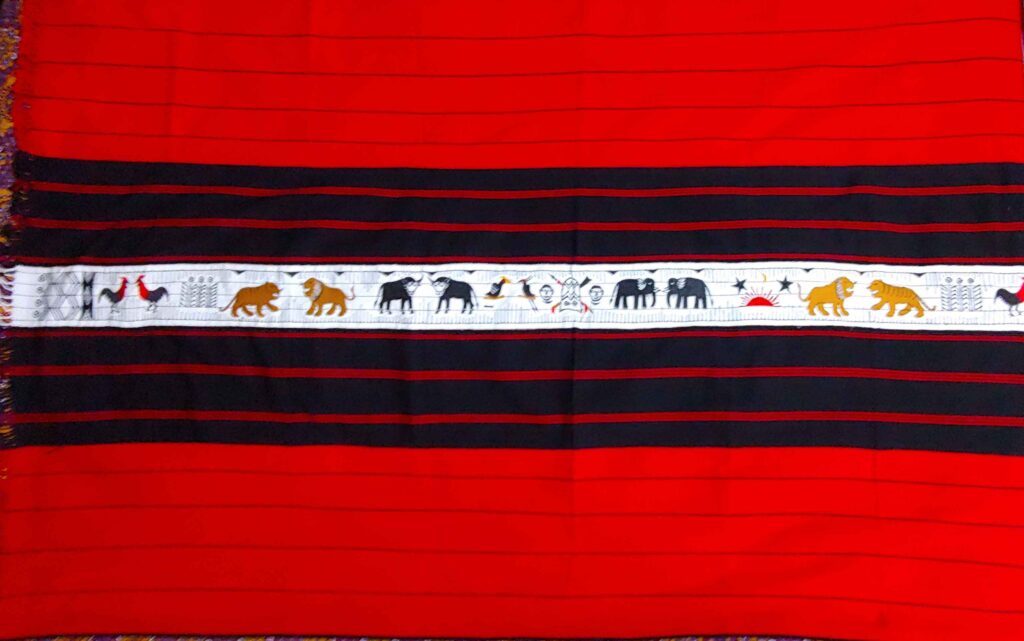
Dream up bold geometric designs, intricate stripes, and symbolic motifs adorning these shawls. The colors themselves are a feast for the eyes – rich blues, fiery reds, and earthy greens, all achieved using natural dyes. These vibrant hues and unique designs aren’t just beautiful; they hold deep meaning, echoing the wearer’s social status, achievements, and even tribal affiliation.
The popularity of Naga shawls extends far beyond Nagaland‘s borders. Tourists flock to undergo this piece of cultural heritage firsthand, taking home these incredible textiles as cherished souvenirs. So, next time you see a Naga shawl, remember – it’s not just fabric; it’s a vibrant part of tradition, skill, and cultural pride.
4. Pottery and Earthenware:
Unlike many places, pottery here is an exclusive domain of the talented Naga women. They keep this age-old craft alive, carefully handcrafting earthen pots without the aid of a potter’s wheel.
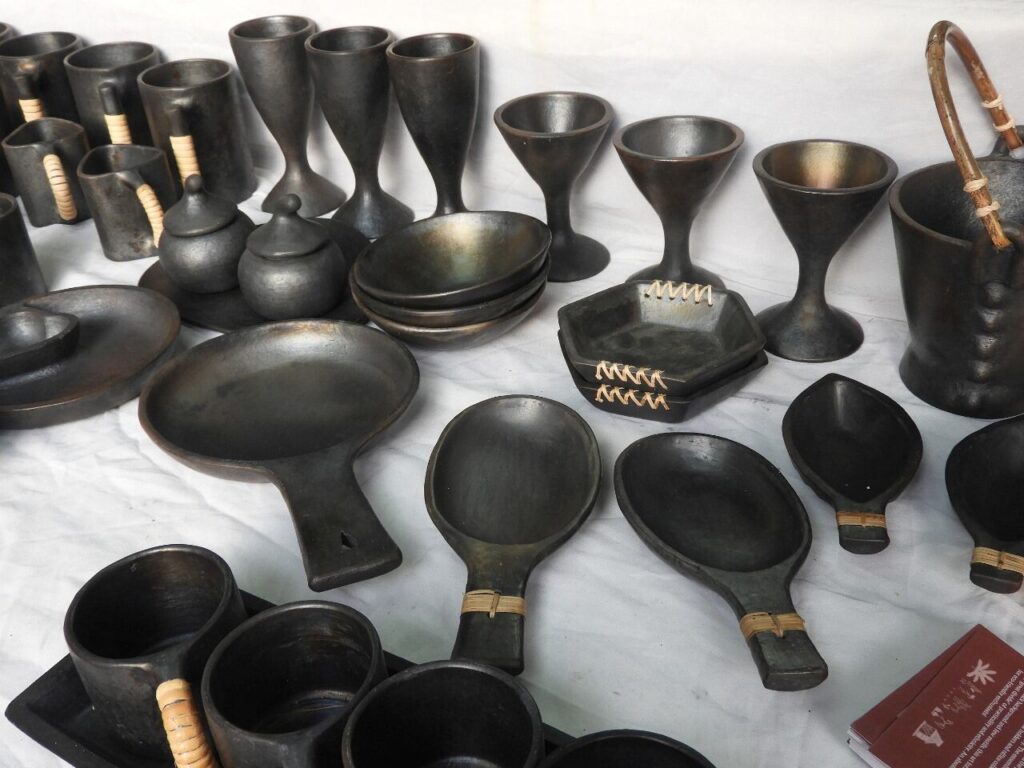
The process is using only their skilled hands and simple tools, these women transform lumps of clay into functional and beautiful pots. The process is a part of their patience and expertise. The clay is carefully collected, shaped, and smoothed before being illustrated with minimal decorations, often inspired by their vibrant textiles.
These handcrafted pots aren’t just beautiful; they play a vital role in Naga life. From storing food and water to cooking delicious meals over open fires, these pots are essential for daily activities. But their significance goes beyond function. They hold cultural meaning, passed down through generations, and are often used in ceremonies and rituals. So, the next time you see a Naga pot, remember – it’s more than just a vessel; it’s a symbol of tradition, skill, and the lasting spirit of the Naga women.
5. Blacksmithy and Metalwork:
Let’s turn up the heat and go into the vibrant world of Naga blacksmithy. This age-old craft is practised by most Naga tribes, with the fascinating exception of the Lothas, who traditionally believe it can impact longevity. However, the Konyak tribe stands out for their exceptional skill and reputation as master blacksmiths.
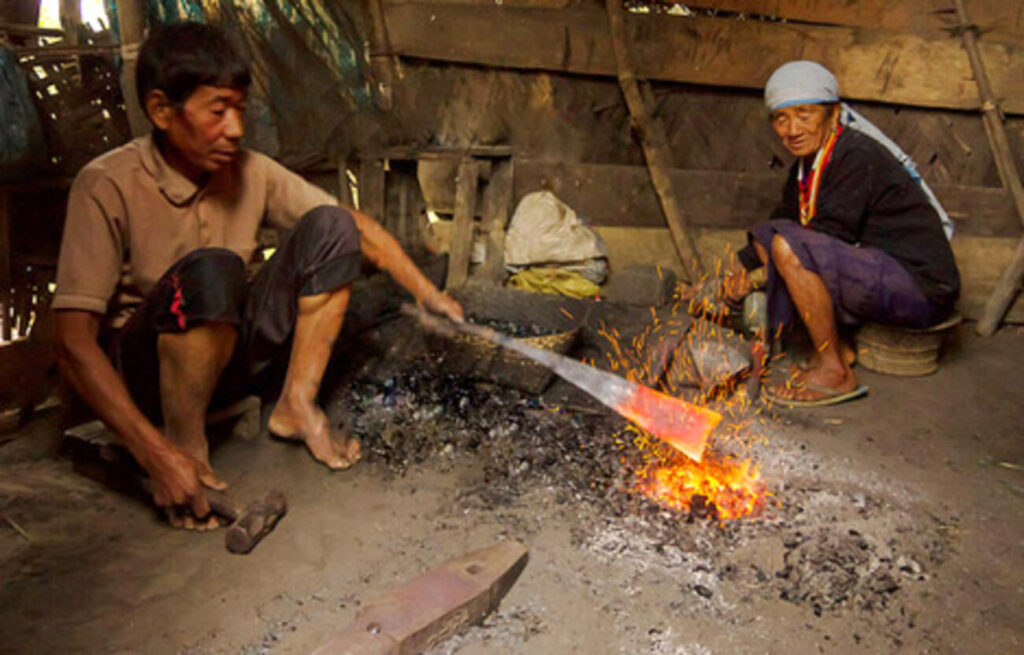
These iron warriors transform hot metal into a mixed range of functional and sometimes decorative items. Keep an eye out for the ever-present dao, a multi-purpose tool used for everything from farming to chopping firewood. Spearheads, axes, and sturdy knives are also common creations, essential for hunting and everyday life. The Konyaks are particularly renowned for their impressive muzzle-loading guns, a testament to their advanced metalworking techniques.
From vibrantly dyed textiles to intricate wood carvings, the Art and handicrafts of Nagaland are a dazzling tapestry of creativity. Each tribe injects its unique flair, transforming everyday materials into functional masterpieces. Imagine witnessing these skills firsthand in a Naga village! So, venture beyond the blog and immerse yourself in this living cultural heritage. You’ll return with stunning souvenirs and a newfound appreciation for the artistic spirit of Nagaland.
What is the famous art of Nagaland?
Nagaland is known for its rich tradition of textile weaving, wood carving, cane and bamboo work, pottery, and blacksmithy. Each tribe has its own specialties and design elements.
What is Naga painting?
While Nagaland is famous for its crafts, there isn’t a widespread tradition of Naga painting on canvas or murals. Their artistic expression is primarily seen in textiles and woodcarvings.
What is the art form of weaving in Nagaland?
Textile weaving is a major art form in Nagaland. Each Naga tribe has its own distinct style and motifs woven into their shawls, cloths, and other textiles. These textiles often reflect social status, wealth, and even religious beliefs.
What is Nagaland best known for?
Nagaland is known for its tribal culture, headhunting traditions (past), spectacular festivals, and rich artistic heritage. The state’s natural beauty with lush green hills and diverse wildlife is another major draw.
Who is the famous painter of Nagaland?
Due to the focus on textiles and carvings, there aren’t many widely known painters from Nagaland. However, the state has a vibrant contemporary art scene with talented emerging artists working across various mediums.



